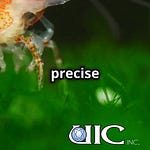Can you reliably quantify microgram-level carbon variations in samples where proteins, minerals, and other organic compounds create analytical interference?
This question drives analytical chemists to the edge of frustration—and it's precisely why this challenge appears in our FAQ section.
The stakes couldn't be higher: when your research conclusions depend on carbon measurements, matrix interference doesn't just compromise data quality; it can invalidate years of work.
Scientists at Washington University confronted this exact analytical nightmare while investigating dolphin ear bones. ( DOI: http://dx.doi.org/10.1016/j.bbagen.2014.03.012 )
Their ambitious goal required tracking minuscule carbonate changes—from 8.1% to 9.35%—across two decades of biological aging.
The sample matrix was a chemist's worst enemy: dense mineral structures interwoven with proteins, lipids, and organic compounds that would confound traditional analytical methods.
The breakthrough came through coulometric precision. These researchers needed to document how time literally rewrites biological chemistry at the molecular level, requiring measurement sensitivity that could detect carbon variations in the microgram range while cutting through complex matrix interference.
Our FAQ addresses this challenge directly: "What is the detection limit of your carbon analyzer coulometer systems?"
The answer delivered the precision they needed—less than 2 μg of carbon detection capability.
The Washington University team selected our CM5015 because coulometry operates on Faraday's fundamental electrochemical laws, providing direct measurement without calibration dependencies that matrix effects typically disrupt.
While other analytical techniques struggle with biological interference and demand extensive sample preparation, coulometric analysis cuts through the complexity with mathematical certainty. The proof lies in their published results: precise carbon quantification in one of the most challenging biological matrices imaginable.
Ready to eliminate matrix interference from your carbon analysis? Discover why leading research institutions trust UIC Inc when precision matters most. Visit our FAQ page to learn how coulometric technology solves your toughest analytical challenges.












Share this post